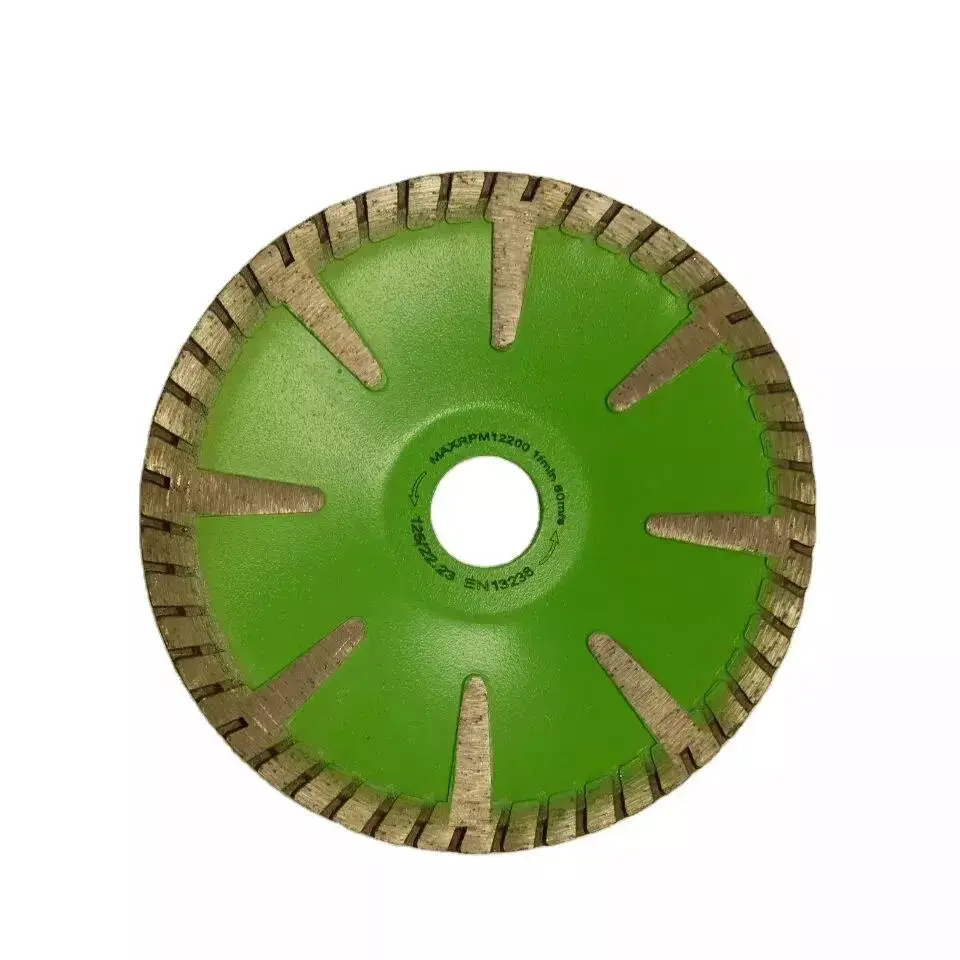Global Leading Diamond Tool Manufacturer.
Optimal Granite Cutting Blade for Professional Projects
Granite, a hard and resistant metamorphic rock, is widely used in both decorative and functional applications. Proper cutting blades are essential to ensure clean, precise cuts, minimizing chipping and cracking. Professional contractors must choose blades that enhance productivity, reduce operational costs, and ensure the highest quality of work.
Choosing the right blade is crucial due to its direct impact on the project outcome. From diamond-tipped to ceramic blades, each type offers unique characteristics and applications. Let's delve into the different types of cutting blades and their benefits.
Understanding the Types of Granite Cutting Blades
There are several types of cutting blades designed for granite, each with distinct features and applications:
1. Diamond-Tipped Blades: These are the most common and versatile type of blade for granite. They feature a diamond matrix bonded to a steel core, providing exceptional cutting performance and durability. Diamond-tipped blades are suitable for both wet and dry cutting and are ideal for large-scale projects.
2. Ceramic Blades: Known for their high toughness and resistance to chipping, ceramic blades are perfect for wet cutting. They offer smoother cuts and are particularly useful for projects requiring a delicate touch. However, they are more brittle than diamond-tipped blades.
3. Segmented Blades: These blades consist of multiple segments, each with a diamond matrix. They are highly adaptable and can be used for both wet and dry cutting. Segmented blades are excellent for making intricate cuts and handling different types of granite.

Factors Influencing the Choice of Granite Cutting Blade
When selecting a granite cutting blade, several factors should be considered to ensure optimal performance and longevity:
- Blade Thickness and Material: Thicker blades are more rigid and suitable for larger pieces. The material of the blade, such as high-speed steel or carbide, affects its wear resistance and durability.
- Cutting Speed and Efficiency: The cutting speed of the blade influences productivity. Faster blades can save time but may require more maintenance. Slower blades, while taking more time, can result in a cleaner cut.
- Durability and Lifespan: High-quality blades with better diamond bonding last longer and require fewer replacements, reducing downtime and costs. Understanding the specific requirements of your project is crucial to choosing a blade that meets your needs.
- Safety Features and Maintenance: Safety should always be a priority. Blades with built-in safety features, such as automatic shut-off and overload protection, can prevent accidents. Regular maintenance, including proper cleaning and lubrication, also extends the blades lifespan.
Comparative Analysis of Granite Cutting Blades
To make an informed decision, consider the performance metrics of different blade types:
- Cutting Speed: Diamond-tipped blades generally offer faster cutting speeds, making them ideal for large-scale projects. Segmented blades, while slower, provide a balance between speed and precision.
- Durability: Diamond-tipped blades are more durable and can handle more cutting without wear. Ceramic blades, while less durable, are highly resistant to chipping and are suitable for delicate projects.
- Ease of Use: Ceramic blades are easier to use for wet cutting and produce smoother cuts. Diamond-tipped and segmented blades are more versatile, capable of handling both wet and dry cutting.
Practical Considerations for Choosing the Optimal Blade
The choice of blade depends on the specific requirements of your project:
- Project Specifics: Consider the size, shape, and thickness of the granite piece being cut. Large, thick pieces may require a different blade than thinner, more intricate cuts.
- Machine Compatibility: Ensure the blade is compatible with your cutting machine. Machine specifications, such as power and cutting depth, should be considered.
- Cost-Effectiveness and ROI: While higher-quality blades may cost more initially, they often offer better value due to their longer lifespan and superior performance.
Tips for Effective Use of Granite Cutting Blades
To maximize the performance and longevity of your granite cutting blade:
- Proper Selection: Choose a blade that matches your projects needs, considering factors such as size, cutting method, and material type.
- Safety Guidelines: Always follow safety protocols when operating your cutting machine. Use personal protective equipment and ensure the blade is properly aligned.
- Maintenance and Storage: Regularly clean and lubricate the blade to prevent wear. Store the blade in a dry, cool place to protect it from damage.
Future Trends and Innovations in Granite Cutting Blades
The field of granite cutting blade technology is advancing:
- Emerging Technologies: Advances in diamond bonding and material science are improving blade quality and performance. These innovations are enhancing the cutting process, making it faster and more precise.
- Environmental Impact: Sustainable practices are becoming more important, leading to the development of blades that are efficient and environmentally friendly. Environmentally conscious materials and designs are reducing the carbon footprint of cutting operations.
- New Blade Designs: Innovations in blade design, such as adaptive cutting edge technology, are making cutting processes more efficient. These designs can adjust to the hardness and structure of different types of granite, providing even better results.
Conclusion
Selecting the right granite cutting blade is a critical decision that impacts the success of your professional projects. By considering the type of blade, its performance metrics, and practical considerations, you can ensure efficient, safe, and high-quality work. Investing in the optimal blade is an investment in the quality and longevity of your projects.

